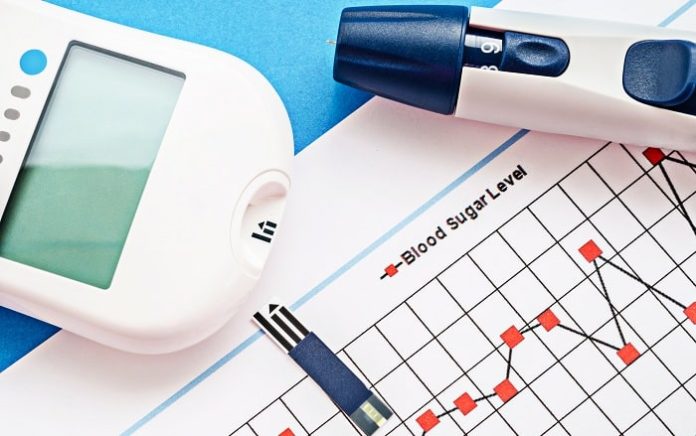Risk Factors
Risk factors are characteristics that can predispose you to developing a condition or disease. Just because you have one or more risk factors does not mean you will get diabetes. Risk factors for type 1 diabetes are not as clearly defined as for type 2 diabetes.
Type 1 diabetes risk factors include:
- Family history of diabetes
- Autoimmune disease, where the body mistakenly attacks the insulin-producing cells
- Environmental factors
Type 2 diabetes risk factors include:
- Age of 45 years or older
- Obesity
- Family history of diabetes
- Diabetes during pregnancy
- Impaired glucose tolerance (IGT)
- Physical inactivity
Being a Native American, African American, Hispanic/Latino American, Asian American, or a Pacific Islander
How can Diabetes be Prevented?
Type 1 diabetes: There are no known methods to prevent type 1 diabetes. Several clinical trials are currently in progress.
Type 2 diabetes: Research studies in the United States and abroad have found that lifestyle changes can prevent or delay the onset of type 2 diabetes among high-risk adults (those with IGT and other high-risk characteristics).
Lifestyle interventions included diet and moderate-intensity physical activity (such as walking for 2 1/2 hours each week). For both sexes and all age and racial and ethnic groups, the development of diabetes was reduced 40% to 60% during these studies that lasted 3 to 6 years. Studies have also shown that medications have been successful in preventing diabetes in some population groups.
Diabetes Prevention Study
The Diabetes Prevention Study conducted in Finland (3) involved 522 middle-aged, overweight people with impaired glucose tolerance (IGT). The study subjects were divided into two groups:
An intervention group who received individual counseling aiming to help them lose weight, reduce fat intake, and increase physical activity, at seven sessions in the first year and then every three months
A control group who received general diet and exercise advice once a year.
After the subjects had been followed up for an average of 3.2 years, the incidence of diabetes was 58% lower in the intervention group than in the control group.
Diabetes Prevention Program
The Diabetes Prevention Program (4) carried out in the USA produced similar findings. This study involved 3,234 overweight people with IGT, 45% of whom were from an ethnic minority group at increased risk of diabetes. The study subjects were divided into three groups, who received:
- General lifestyle advice once a year, plus metformin (daily)
- General lifestyle advice once a year, plus placebo (daily)
- Intensive lifestyle advice (16 sessions over 24 weeks) aiming to achieve weight loss and increased physical activity
The subjects were followed up for an average of 2.8 years. Compared to the placebo group, the incidence of diabetes was 58% lower in the group that had received intensive lifestyle advice, and 31% lower in the group who had received metformin. Treatment with metformin was most effective among younger, heavier people (those 25-40 years of age who were 50 to 80 pounds overweight) and less effective among older people and people who were not as overweight.
How can Complications be Prevented?
Recent studies confirm that good blood glucose control is the most important factor in delaying or even preventing the complications of diabetes such as cardiovascular disease, kidney disease, blindness and amputations.
For good blood glucose control, the diabetic patient needs to monitor blood glucose levels. They also need to know average blood glucose levels, the glycosylated hemoglobin, HbA1c. The HbA1c is a measurement of long-term blood glucose control whose values are between 4 percent and 20 percent. The normal range is from 3.8 percent to 5.8 percent. The diabetes complication rate is reduced greatly for a patient who obtains an HbA1c of 7 percent or less.
Intensive Diabetes Self-Management System
An effective new Standard of Care has been developed to treat diabetes. It is called the Intensive Diabetes Self-Management System supported by the American Association of Clinical Endocrinologists (AACE).
Treatment plans include:
- Self-monitoring of blood glucose levels
- Exercise and diet guidelines
- Oral medications and/or insulin
- Target HbA1c level should be as close to 7 percent as possible
Regular checks
Every three months: HbA1c, feet, and height, weight and blood pressure should be checked, along with a physical examination for complications of diabetes.
At least once a year, patients should have a diabetes education review, an eye exam, a lipid profile (cholesterol – HDL, LDL; triglycerides), kidney tests (creatinine, urine protein, microalbumin), a peripheral nerve test, and a treadmill test or EKG.
Patients who follow the Intensive Diabetes Self-Management System can, on average, delay major complications 15 years and add 5 years to their lives. For more information, call 1-888-50 SUGAR.
“Be Smart About Your Heart: Control the ABCs of Diabetes”
Patients with type 2 diabetes have high rates of hypertension, dyslipidemia and obesity, which are major reasons for the higher rates of cardiovascular disease in diabetic patients. The treatment of cardiovascular diseases accounts for a large part of the huge healthcare costs attributable to Type 2 Diabetes. Thus from an economic perspective, prevention of cardiovascular disease is key.
A variety of successful management approaches including therapeutic lifestyle changes (diet, weight management, increased physical activity, and drug therapy) are currently available to control heart disease risk factors and prevent or treat the complications of diabetes.
The National Diabetes Education Program has launched a new awareness campaign to highlight the link between diabetes and cardiovascular disease. “Be Smart About Your Heart: Control the ABCs of Diabetes” focuses on managing blood glucose with the A1C test, blood pressure, and cholesterol:
- A is for A1C (short for hemoglobin A1c), which measures average blood glucose over the past three months. Suggested target — below 7 percent. Check at least twice a year.
- B is for Blood Pressure. High blood pressure makes the heart work too hard. Suggested target — below 130/80. Check at every doctor’s visit.
- C is for Cholesterol. LDL (bad cholestserol) builds up and clogs arteries. Suggested target — below 100. Check at least once a year.
- The targets above have been suggested by the National Institutes of Health and the American Diabetes Association. Personal targets should be recommended by your health care provider.
Other recommendations of the “Be Smart About Your Heart” campaign include:
- Get physical activity every day
- Eat less fat and salt
- Eat more fiber
- Stay at a healthy weight
- Stop smoking
- Take medicines as prescribed
- Ask your doctor about taking aspirin
- Ask others to help you manage your diabetes
The National Diabetes Education Program is a joint program of the National Institutes of Health and the Centers for Disease Control and Prevention. To get the new “Be Smart About Your Heart: Control the ABCs of Diabetes” brochure, and the free wallet card, and to learn more about diabetes, call 1-800-438-5383 or contact the ADA at 1-800-DIABETES (1-800-342-2383).

























